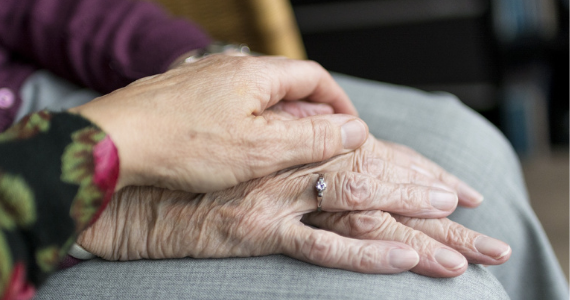If you need help in your home, or can no longer live independently, the Australian Government provides a range of aged care services.
These services are subsidised, but you need to contribute to the cost if you can afford to.

Where to start
The first thing to do is think about what you need. You might want to stay in your own home, but need some help with domestic chores. Or you might be ready to start looking at options for longer-term residential care.
Talk to your family or friends about what you want. This will help you get the right care when the time comes.
Once you have an idea of your needs, contact My Aged Care. They will:
-
check your eligibility
-
assess your care needs
-
assess your financial situation
It’s important to plan ahead, as this process can take time. There are waiting lists for some services.
Care and help at home
To help you stay in your own home for as long as possible, the government provides subsidised home care. This is to help with everyday tasks like shopping, cooking and transport, as well as with personal and nursing care.
There are two types of home care:
-
entry level care — Commonwealth Home Support Programme for people who can manage but need support with a few tasks
-
more complex care — Home Care Packages for people who need more support on an ongoing basis
What you pay
If you can afford to do so, you may have to pay:
-
a basic daily fee — a standard amount that everyone has to pay
-
an income-tested fee — an amount that will vary depending on your income and assets
If you can’t afford to pay, you may be able to get financial hardship assistance.
Check My Aged Care’s fee estimator to see how much you might have to pay for home care.
Residential aged care
If you can no longer live at home, you may choose to move to an aged care home (sometimes called a nursing home or residential aged care facility). Care is available 24 hours a day. This can be a short-term stay or a permanent move.
What you pay
If you can afford to do so, you may have to pay:
-
a basic daily fee — a standard amount that everyone has to pay
-
an income tested fee — an amount that will vary depending on your income and assets
-
accommodation payment — an amount for your room, based on its quality, location and features
The accommodation payment is the biggest cost. You can pay this as a:
-
bond or lump sum up-front, which is refundable (called a Refundable Accommodation Deposit, or RAD)
-
daily amount (called a Daily Accommodation Payment, or DAP)
-
combination of RAD and DAP
If you can’t afford to pay, you may be able to get financial hardship assistance.
Check My Aged Care’s fee estimator to see what accommodation payment you might have to pay.
Selling or keeping your family home
You may be thinking of selling the family home to pay the bond (RAD). Or maybe you’re wondering whether it’s better to rent it out to help pay the daily amount (DAP)?
You have 28 days after you go into aged care to decide how to pay for your accommodation. You must pay the DAP until the RAD is paid:
-
if you decide to pay a RAD within those 28 days, you have 6 months to pay the RAD
-
if you decide to pay a RAD after those 28 days, it is due as agreed between you and the provider
You may need professional financial advice to work out whether selling or renting your home is the best option.
Either way, be aware that what you choose to do with the family home may affect the Age Pension assets test.
If you sell the home, its value will count towards the Age Pension assets test.
If you rent out the home, its value may count towards the Age Pension assets test, depending on when you moved into aged care.
If you keep the home without renting it out, it is exempt from the Age Pension assets test for two years from the date that you moved into aged care. (This may vary if you are, or were, a couple when you moved into aged care.)
Speak to a Services Australia Financial Information Service (FIS) officer for more information.
Short-term help
Short-term help is available, either in your own home or in an aged care home. There are different types of care:
-
transition care (or after-hospital care) — for when you’ve been in hospital and need help with your recovery
-
respite care — for when you or your carer needs a break (for a few hours, a few days, or longer)
-
short-term restorative care — for when you’ve had a setback and want to get your independence back
Private retirement accommodation
As well as government subsidised aged care homes, there are many private retirement accommodation options. For this kind of accommodation, you pay the full amount yourself.
The Australian Competition and Consumer Commission has information about types and costs of retirement homes.
For more information, call us on (07) 3844 4322 .
Source: moneysmart.gov.au
Reproduced with the permission of ASIC’s MoneySmart Team. This article was originally published at https://moneysmart.gov.au/aged-care
Important note: This provides general information and hasn’t taken your circumstances into account. It’s important to consider your particular circumstances before deciding what’s right for you. Although the information is from sources considered reliable, we do not guarantee that it is accurate or complete. You should not rely upon it and should seek qualified advice before making any investment decision. Except where liability under any statute cannot be excluded, we do not accept any liability (whether under contract, tort or otherwise) for any resulting loss or damage of the reader or any other person. Past performance is not a reliable guide to future returns.
Important
Any information provided by the author detailed above is separate and external to our business and our Licensee. Neither our business nor our Licensee takes any responsibility for any action or any service provided by the author. Any links have been provided with permission for information purposes only and will take you to external websites, which are not connected to our company in any way. Note: Our company does not endorse and is not responsible for the accuracy of the contents/information contained within the linked site(s) accessible from this page.


